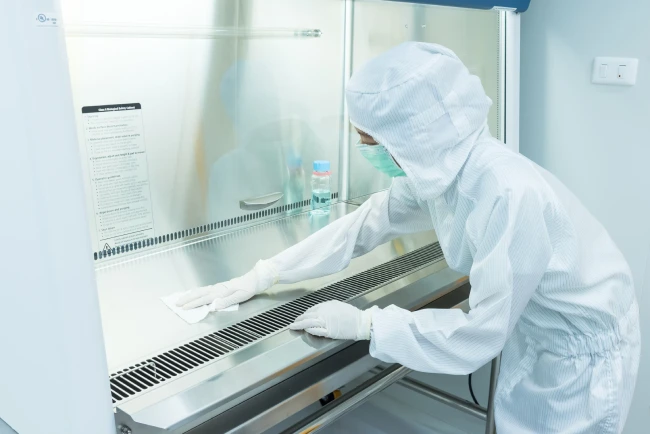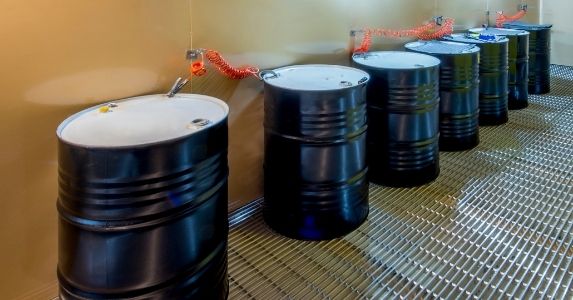7 Key Reasons to Apply True Gas as BSC Disinfectant
It’s hard to overstate the threat of contamination to biological safety cabinets (BSCs). It is a danger that is regular and constant. It can harm any organization—from the smallest startups or academic labs all the way up to the largest pharmaceutical enterprises.
A BSC must be sterile—or risk the integrity of the work or research environments. Because of this, decontamination is a crucial procedure for ensuring the best performance from your BSCs in the long term. The disinfectants used are crucial for maintaining the cabinets.
And while there are a variety of chemicals available for cleaning these appliances, the most efficient and easily deployed one is chlorine dioxide. We’ll explore why in this blog—and how it can make a major difference in how well your organization performs in R&D or production.
BSC Contamination Risks
While lab and other managers realize that their BSCs are important protection appliances, they don’t necessarily understand all the nuances of maintaining them. One of the greatest challenges is cabinet contamination, as this blog has already noted.
The contaminants include:
- Mold
- Viruses
- Bacteria
When a BSC operates, it draws in room-contaminated air at the front—then draws the air into a supply filter. The supply air is forced down to the work surface, and this contaminated air is recycled back to the filter.
Often, the contaminants enter the work areas through errors, typically caused by improper worker training—or badly organized workspaces. Sample or chemical spills, substandard cell culture management, and an unclean working area introduce contaminants to the workspace in which the BSCs operate. And, sometimes, a large spill in the appliance can result in a completely compromised unit.
Contamination Hurts BSC Performance
In severe cases, contamination can prevent experimental reproducibility or disrupt production operations. Ultimately, it can require expensive repairs, or even complete replacements, and prevent return on investment (ROI) on the appliances.
Naturally, managers and their staff members must be vigilant to maintain cleanliness in the BSCs and their surrounding areas. The teams need to also adhere to best practices—such as participating in a thorough training program—to keep the cabinets in top working order.
However, even in the most pristine BSC environments, periodic decontaminations are a best practice. And those cleanings, whether performed in-house or by a third-party vendor, should involve the application of chlorine dioxide. As we’ll see, chlorine dioxide offers clear disinfection advantages when compared to alternatives (such as vaporized hydrogen peroxide (VHP) or paraformaldehyde).
Why Chlorine Dioxide as a BSC Disinfectant
We’ll now share seven strong features and capabilities that chlorine dioxide offers that make it the default BSC cleaner.
- Has official approval: Perhaps most importantly, it is cited as part of the official decontamination process (as defined by the Standard 49 for BSC certification from the National Science Foundation/American National Standards Institute (NSF/ANSI)).
- Offers training advantages: Chlorine dioxide experts are trained to follow both equipment manufacturer decontamination guidelines and corresponding standard operating procedure (SOP). (This is NSF/ANSI SOP NO. D15-CDBSC Chlorine Dioxide Decontamination of Biological Safety Cabinets.) Because of this, chlorine dioxide requires no extra training or effort—and the results conform more closely to the official standards.
- Delivers penetration power: At room temperature, chlorine dioxide is a true gas, allowing it to penetrate the BSC’s high efficiency particulate air (HEPA) filter—and pass into the appliance’s tubing and various nooks and crannies for full disinfection. Rival chemicals can’t duplicate this performance; for instance, VHP can’t offer the same 100% kill rate for all biological contaminants.
- Leaves minimal residue: Also, chlorine dioxide is free from condensation consequences. The gas leaves almost no residue or harmful byproducts—and technicians can easily remove these by wiping them with alcohol or water.
- Provides deployment simplicity: Chlorine dioxide is free from the precise and complex application requirements of the other decontaminants. For instance, there are unique operational humidity requirements for paraformaldehyde and VHP—ones which chlorine dioxide is exempt from. With even small errors or variations, technicians can easily reduce the effectiveness of non-chlorine dioxide disinfectants. In fact, VHP is completely humidity dependent—and creating the requisite humidity environment is challenging and takes extra time. (It’s a best practice that no cleaner requires anything above a 20% humidity requirement.)
- Supports fast decontamination processes: In its normal state, chlorine dioxide is ready to deploy with minimum prep work, as we noted above. So, technicians typically can perform a validated chlorine dioxide cleaning procedure with relative speed. Other approved substances, like VHP, can require special treatment.
- Delivers breadth of applicability: Chlorine dioxide is applicable across the greatest range of decontamination procedures for the widest variety of BSCs and related equipment.
Partnering for Gas Decontamination
As you can see, there are many nuances and challenges to decontamination—including the selection of the proper cleaning substance. Clearly, chlorine dioxide offers the most advantages when compared to other techniques. A trained specialist can help deploy any decontamination substance—but the best will prefer to use chlorine dioxide.
Triumvirate Environmental offers such experts, ready to repair, decontaminate, and maintain your BSCs, as needed. Want to learn more? We invite you to watch our on-demand webinar "Boost Lab Safety & Research Integrity By Eliminating BSC Contamination."
Or you can talk to us today.







